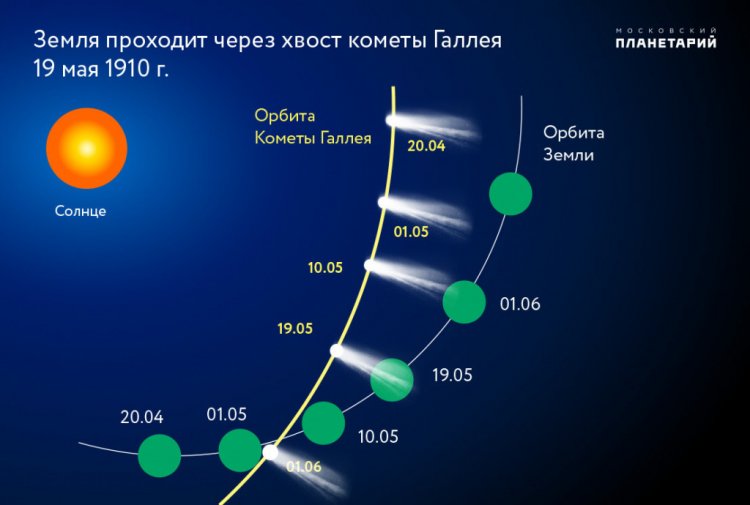It is accepted to consider Halley’s Comet the most popular one of all comets. Astronomers call it the only short-period comet that is clearly visible with a naked eye. It makes a full turn around the Sun with a period of 76 years along highly elongated elliptical orbit. In 1705, scientist Edmund Halley (the comet was named after him) foresaw the comet’s coming to the area of the Earth using the facts of its path in 1531, 1607 and 1682. The English physicist calculated the trajectory of the comet on the basis of its orbit and stated that it would come back in 1758, which actually happened.
The Earth met with the tail of Halley’s Comet once again on May 19, 1910. At that time, even the most sensitive instruments registered no unusual atmospheric phenomena on the Earth capable of making impact on the life of mankind. Having gone through the comet’s tail, our planet played the part of a sort of probe. It stands to mention that the Earth had more than once gone through the comets’ tails, but the effect was always the same – no impact on the processes in the plant’s atmosphere were observed. The astronomers would carefully monitor all changes taking place in the head and tail of Halley’ Comet. Over the whole period of observations and studies, the scientists had obtained over 1,000 comet’s astronegatives, over 100 spectrograms, several hundred drawings and a great number of its equatorial coordinates at various moments of time. This rich material allowed to study in detail the nature of the comet’s orbital movement, the type, structural features and chemical composition of its head and tail, as well as many physical parameters of comet’s nucleus and the atmosphere surrounding it. The scientists suppose that the lifetime of Halley’s Comet may reach about 10 million years. According to the preliminary data, it will eventually either evaporate or split in halves in several tens of millenniums, or pushed away from the solar system in a hundred thousand years. Over the period of past 2,000-3,000 returns, the Halley’s Comet’s nucleus has reduced by 80-90% in mass. Its last meeting with the Earth was recorded in February 1986. According to the specialists, the people will see Halley’s Comet next time in mid-2061.
Source: Moscow Planetarium
Based on open sources.
Source of image in the text and on homepage: RusTeam Media























